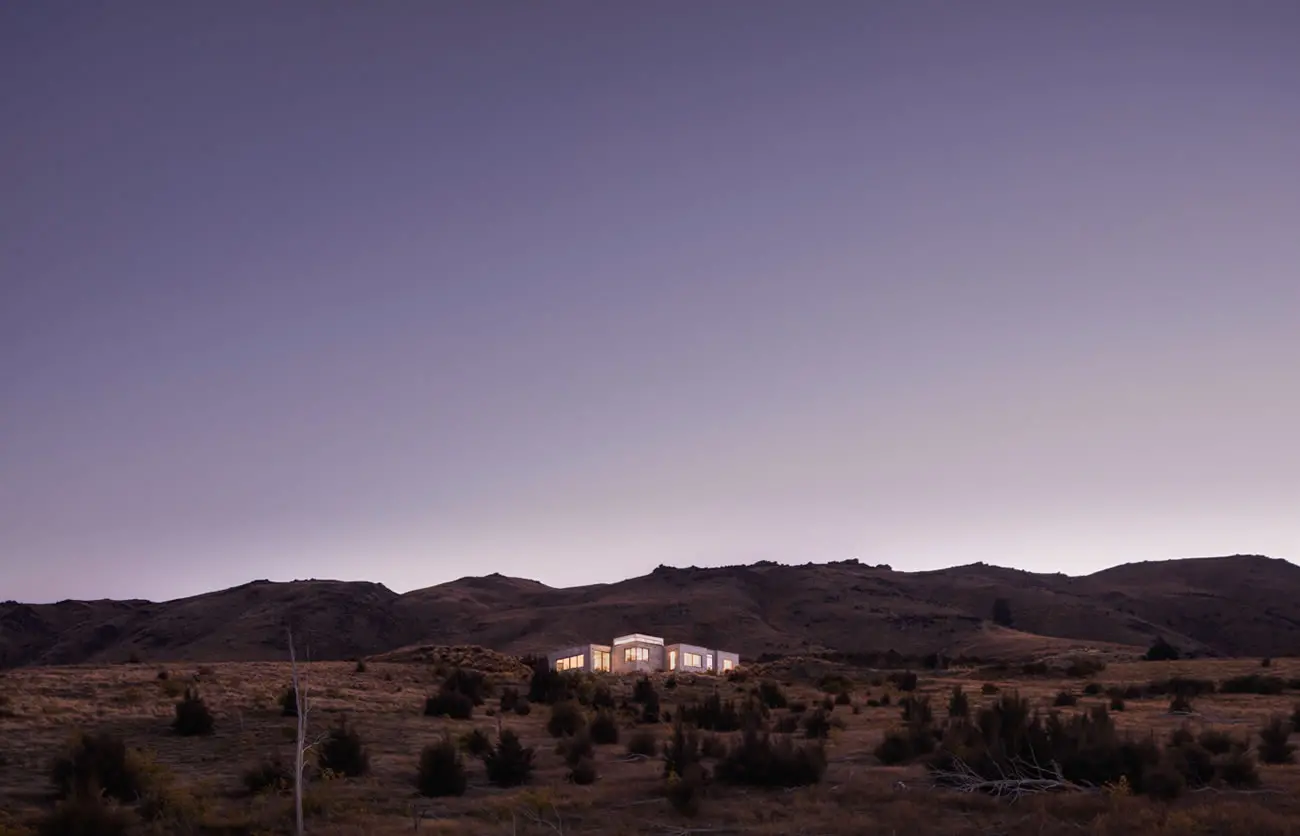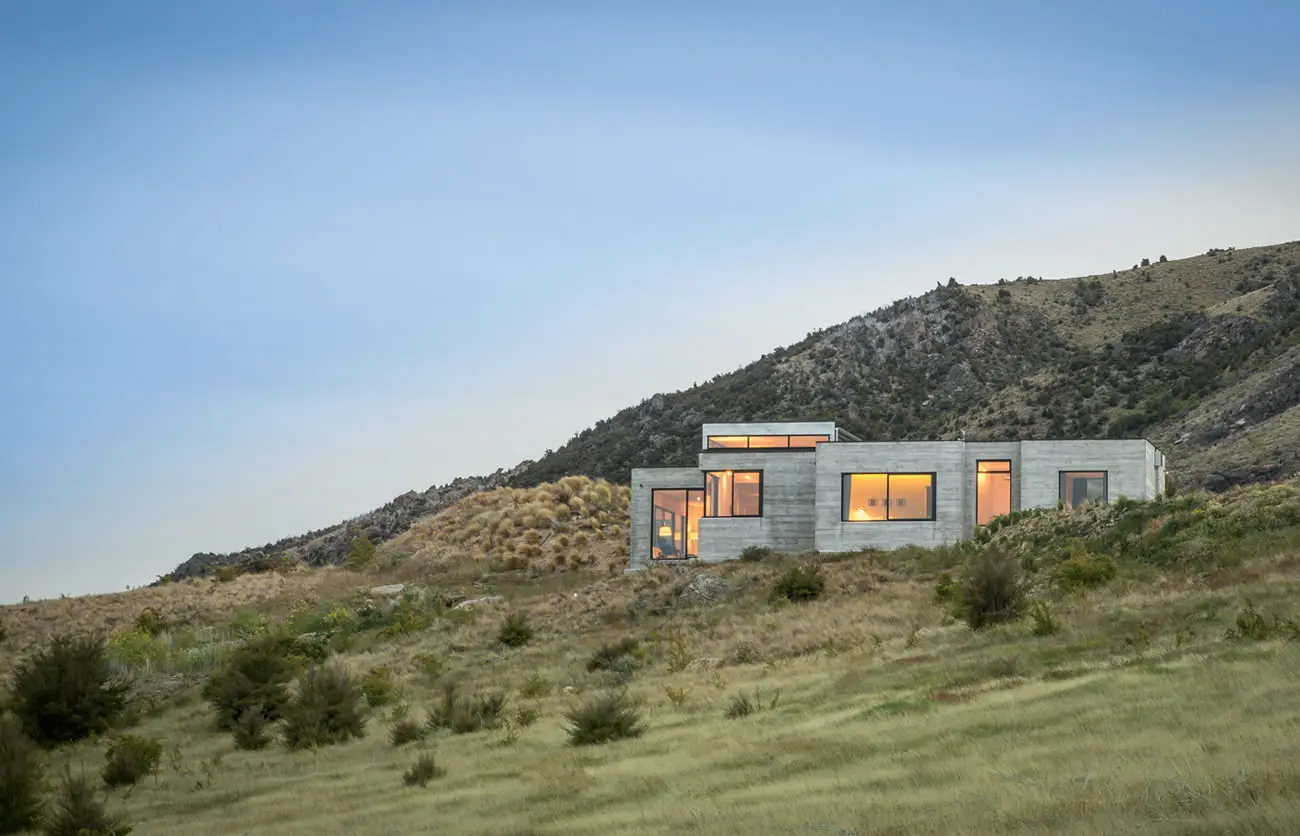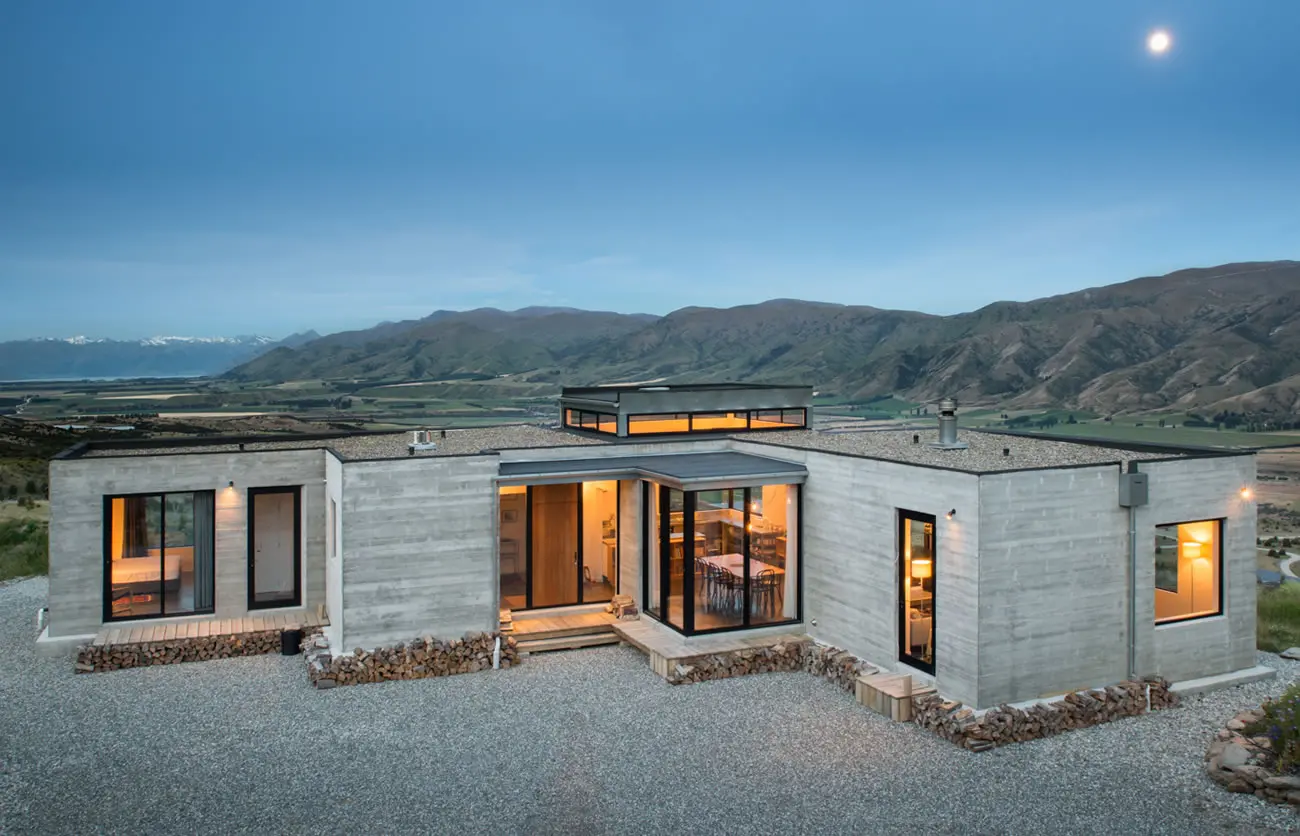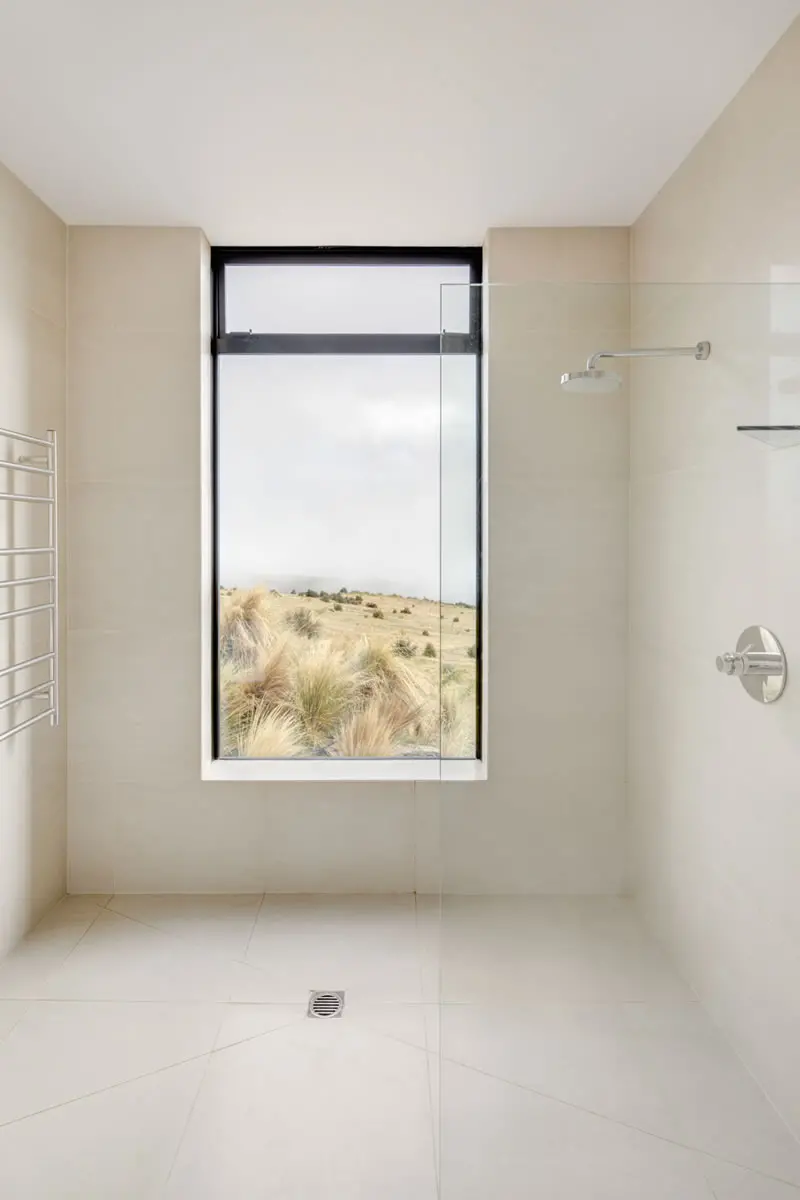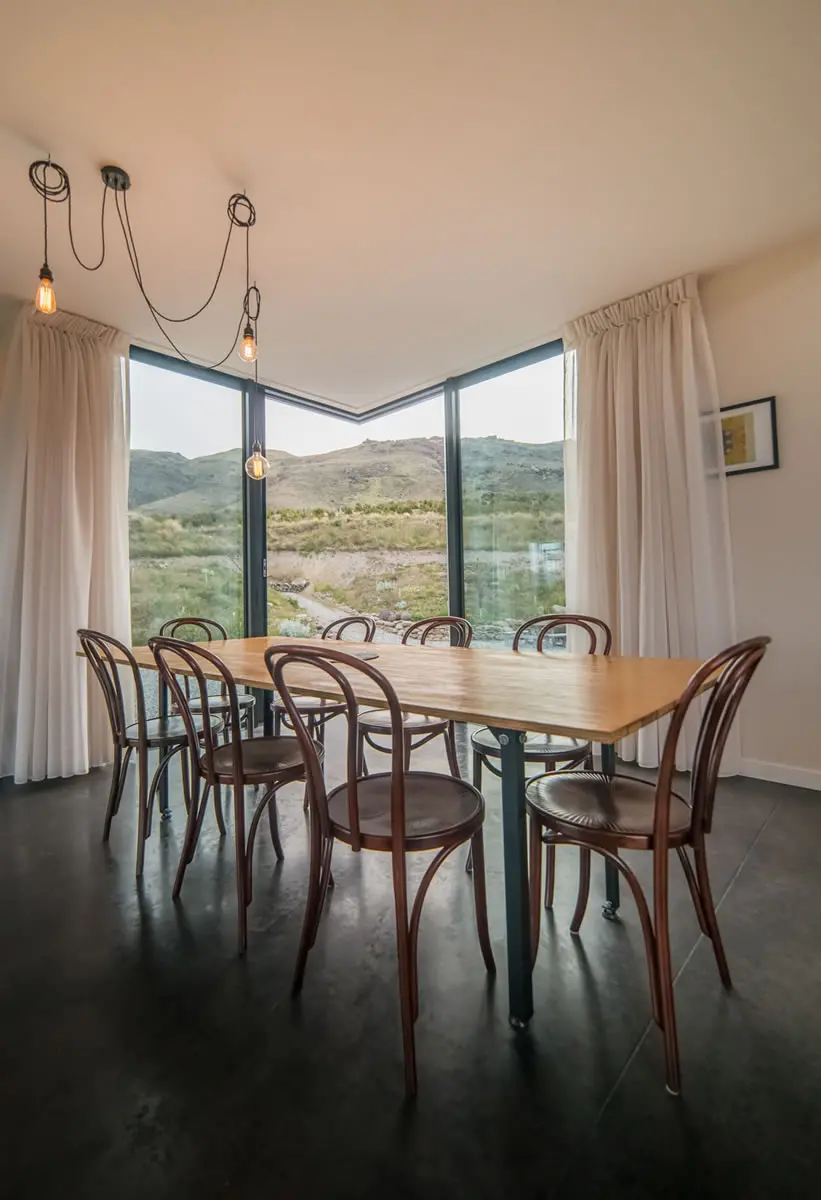
Location: Queensberry
Skip to galleryEnergy Efficient Home in Queensberry Hills
Nestled in the foothills of the Pisa Range between Wanaka and Cromwell, the elevation of this site means it is often within or above the clouds. It’s an incredibly harsh environment with strong prevailing winds throughout most of the year, and plummeting temperatures in winter.
But it is this brutal, changeable nature of the site that appealed to the clients, a couple who reside permanently in central Sydney. For them, this house was conceptualised as an escape from the business of high-density living, architect Chris Norman says.
It’s a relatively isolated site, surrounded predominantly by tussock – far below, the landscape converges into farmland, paddocks sitting side-by-side like a patchwork quilt. From above, the flat-roofed form of the home blends seamlessly with the mountainous surrounds and paddocks below. Local schist chips sit atop a warm roof, allowing the form to sit lightly within its environment, almost becoming one with it from a higher viewing angle.
The footprint of the house is essentially made up of a collection of box-shaped forms that come together to create an L-shape to form shelter for an internal courtyard cut into the hillside at the rear of the site.
“The courtyard contains all the domestications of the house within one area so the rest of the house sits naturally within the tussocks and touches the landscape lightly,” Chris says. The courtyard will be developed as an outdoor living area with water features, timber decking and planting to create a sheltered haven.
Concrete Construction to Withstand the Harsh Environment
Due to the harsh climatic conditions, extensive joinery was worked into the design to allow for the surrounds to be seen both from the courtyard at the rear of the home, and from most rooms within it.
Concrete was chosen as the cladding primarily because of its durability and lack of maintenance requirements. “We used a natural, local aggregate concrete with a timber board formwork,” Chris says. “We chose a wet macrocarpa formwork so we could achieve that rough bandsawn timber imprint in the concrete.” Narrow birds-mouth joints to the concrete panel corners and matched board widths allow a continuous texture that creates the illusion that house is shaped from a single volume of concrete.
The result is a beautifully textured exterior that changes with the elements; when wet its hue gets darker, in summer it is lighter – allowing the house to continuously blend in with the surrounds as they move through the seasons.
Inside, the local aesthetic is continued with polished concrete floors, tinted to a dark ebony hue, while an exposed concrete hearth adds to the earthen, natural theme. A cast iron fire imported from Australia offers another focal point against the dramatic backdrops framed on all sides by expansive glazing.
A Cheminees Philippe cast iron woodburning fire is left exposed revealing the sculptural quality of the fire while providing efficient radiant heat for the winter days when the house remains in the inversion layer of clouds and there is no solar gain to heat the house.
Airtight Construction and Continuous Insulation
The polished concrete topping slab sits upon 200mm of hardfill and is encapsulated with high-grade rigid insulation with the structural slab below. This allows for a fully insulated large volume of thermal mass to help retain energy captured by solar gain. The precast concrete walls however do not expose the mass to the interior, instead the walls are lined with 100mm of rigid insulation so that there is a continuous line of insulation from the topping slab up the walls and through the roof structure. Threaded rod and rondo battens tie the wall linings back to the concrete structure minimising thermal bridging down to the small diameter of the threaded rod.
The airtight construction requires a balanced pressure Mechanical Heat Recovery Ventilation system (MHRV) to provide preheated fresh air via a heat exchanger that captures the heat from the stale extract air. Separate on site grey and black water systems add to the sustainability credentials of this durable and energy efficient home.
Interested in energy efficient homes in New Zealand? Read more about the technical details of this high performing home on our blog.
Gallery
Photographer: Jem Cresswell & Larkin Design
